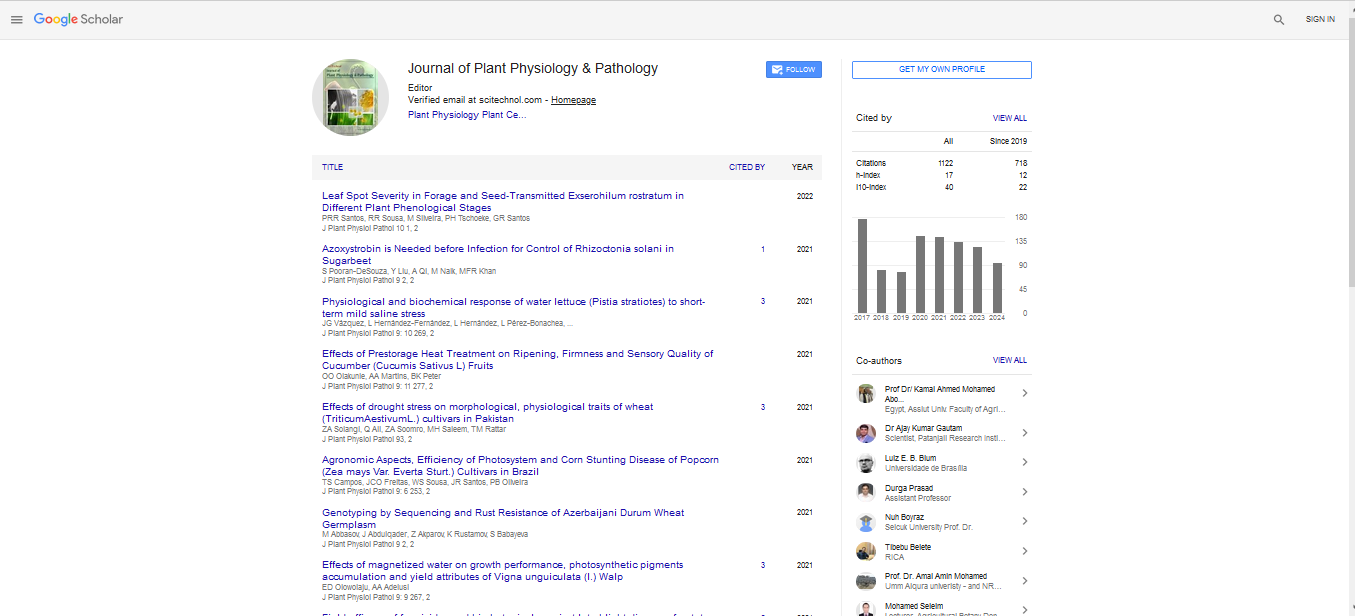Can microwave soil heating increase soil fertility and sustain wheat yield?
Muhammad Jamal Khan
The University of Melbourne, Australia
: J Plant Physiol Pathol
Abstract
Pre-sowing microwave (MW) soil treatment has the potential to reduce the weed pressure in the no-till farming system. However, the dynamics of this transient heat disturbance on soil nutrient profile, uptake and accumulation in plant biomass is poorly understood. In this study, we examined the effect MW soil treatment on the recovery and accumulation of nitrogen (N) in wheat dry biomass using the 15N-pool dilution technique and temporal changes in yield were assessed by running sequential residual trials. Finally, the abundance of ammonia oxidizing bacteria (AOB) and archaea (AOA) was assessed by using quantitative polymerase chain reaction (qPCR). The MW treatment achieved a temperature gradient of 75–85 °C; however, the temperature induced changes did not significantly increase the N derived from fertilizer (Ndff %). The maximum Ndff (13%) was achieved from the control compared to the MW treatment (8%), at higher N dose. Although, the total N accumulation in dry biomass increased 17% through MW compared to the control, independent of the N application. Consequently, the grain yield supported by indigenous N supply was 152% higher with MW treatment and this consistently sustained wheat productivity measured at 440 and 740 days since MW application (Figure 1). Additionally, there was no significant detrimental effect induced by MW treatment on the abundance of AOB and AOA. The AOA amoA gene copy number was numerically higher than AOB. In summary, sustained yield response and N accumulation reflected a long-term reliability of MW soil heating and a more beneficial influence on the soil quality opens another research window for the application of MW technology.
Biography
E-mail: mkhan3@student.unimelb.edu.au
 Spanish
Spanish  Chinese
Chinese  Russian
Russian  German
German  French
French  Japanese
Japanese  Portuguese
Portuguese  Hindi
Hindi 
